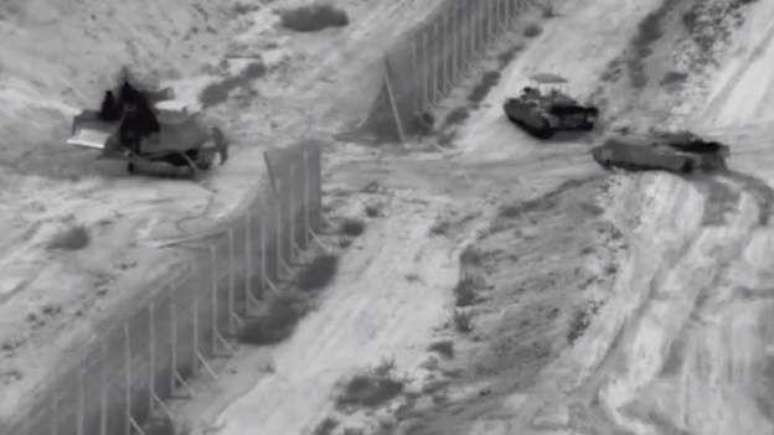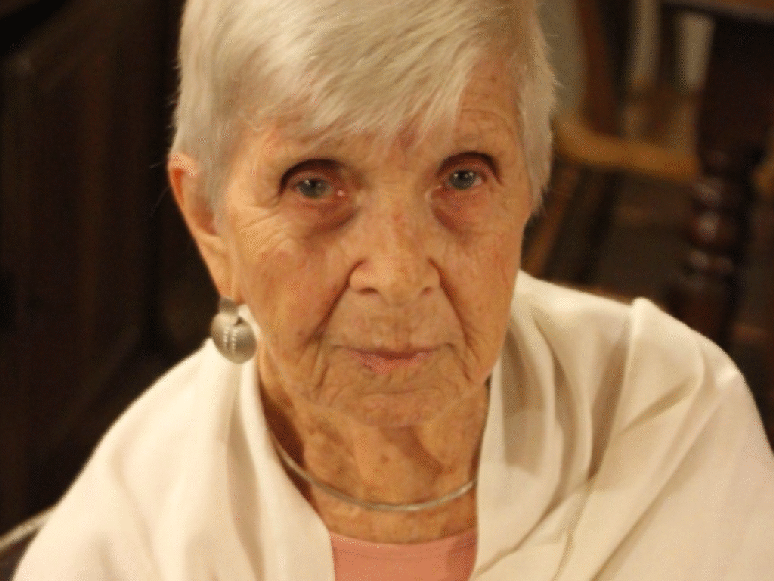The Israeli military reported that the attack was carried out as part of “preparation for the next phases of combat” and “hit several terrorist cells, infrastructure and anti-tank missile launch points”.
The Israeli Armed Forces (IDF) carried out a “targeted attack” with tanks in northern Gaza overnight.
The Israeli military reported that the attack was carried out as part of “preparation for the next phases of combat” and “hit several terrorist cells, infrastructure and anti-tank missile launch points”.
“The soldiers have since left the area and returned to Israeli territory,” the IDF continued.
While Israel says its airstrikes have hit 250 Hamas targets in the past 24 hours, the UN humanitarian coordinator says “nowhere is safe in Gaza.”
Hamas-controlled Gaza’s Health Ministry says nearly 6,500 people have been killed since October 7, when more than 1,400 people died in Hamas attacks on Israel.
More than 200 people are still held hostage in Gaza.
Prime Minister Benjamin Netanyahu said in a speech on local television that IDF forces were still preparing for a land invasion, but gave no information on when that might happen.
Israel told 1.1 million residents of Gaza City and other areas north of the Strip to leave their homes “for their own safety.”
But a senior UN official told the BBC that some Palestinians who fled their homes in northern Gaza are starting to return as conditions in the south worsen.
A man in Khan Younis, where most Palestinian refugees are concentrated in the south of the Strip, told the Reuters news agency: “The southern region is safe (…) There are massacres day and night, many massacres, where children, young people, newborns, everyone dies.”
“Buildings have been destroyed, trees have been killed… there is no safe place in the entire Gaza Strip. The south is destroyed, all the deaths and displacements are in the south,” he continued.
“Nowhere is safe in Gaza”
This is not the first time the IDF has confirmed an incursion into the Gaza Strip since October 7.
On October 13, Israeli security forces announced operations in Gaza for the first time since the Hamas attacks, sending troops and tanks to attack rocket-firing Hamas operatives.
It was on this day that Israel warned residents of the north to evacuate to the south.
On October 22, one Israeli soldier was killed and three were injured by a missile fired at an IDF tank during an attack on the Gaza Strip.
This Thursday (26/10), the United Nations humanitarian coordinator for the Palestinians, Lynn Hastings, made a comment in response to Israel’s warning to people to evacuate Gaza City.
“For people who can’t evacuate, because they have nowhere to go or because they can’t move, advance notice makes no difference,” he said.
“When evacuation routes are bombed, when people from the north and south are caught up in attacks, when essentials for survival are missing and when there is no guarantee of return, people are faced with impossible choices,” has continued. “There is no safe place in Gaza.”
He added that armed conflicts must follow the rules of international law.
“This means that civilians must be protected and have the essentials to survive, wherever they are and regardless of whether they decide to move or stay.
“This also means that the hostages – all hostages – must be released immediately and unconditionally.”
The World Health Organization has released a list of medical supplies it believes are ready and waiting across the border from Gaza, Egypt.
They include surgical equipment for 3,700 injured patients, basic and essential health services for 110,000 people, and medical equipment for 20,000 patients with chronic diseases.
The WHO calls for “immediate and uninterrupted access to and from Gaza” to support the territory’s “difficult health system”.
In recent days, dozens of humanitarian aid trucks have been admitted into Gaza through the Rafah crossing on the border with Egypt, but aid agencies say at least 100 trucks a day are needed.
Analysis: Why Israel wants the ground invasion to seem imminent
For BBC correspondent Tom Bateman, who is in Jerusalem, the images of tanks in Palestinian territory recently released by Israel “are exactly the sort of thing you would expect before a ground invasion: troops acting to find and destroy opponents on their territory.”
Images released by Israel show armored tanks and bulldozers inside Gaza. The military’s commentary refers to fighting there, although the images do not show it.
The IDF said the troops withdrew “at the end of the action.”
But the episode doesn’t provide many clues about the timing of a ground operation.
The language used by the Israeli army is stronger than in previous operations, saying they are “part of the preparations for the next phases of combat.”
But narrative warfare is also fundamental. Israel wants to maintain the sense that an incursion is imminent for three reasons, according to Bateman:
- To prevent the morale of the troops from falling;
- So that the Israeli public sees that the answer is coming;
- And to maintain pressure on Hamas, especially regarding hostage negotiations.
Source: Terra
Rose James is a Gossipify movie and series reviewer known for her in-depth analysis and unique perspective on the latest releases. With a background in film studies, she provides engaging and informative reviews, and keeps readers up to date with industry trends and emerging talents.







